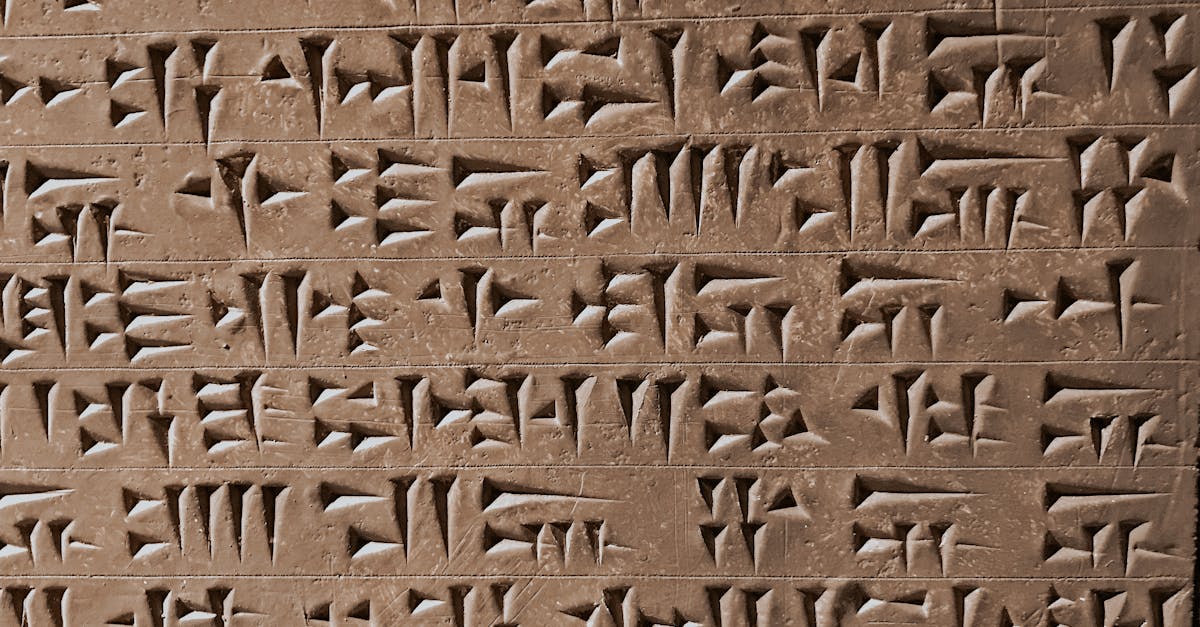The quest to identify the oldest language in the world is a journey through time and culture, captivating linguists and history enthusiasts alike. Various languages claim this title, each with its own rich history and significance. In this blog post, we will explore the leading contenders for the title of the oldest language, along with intriguing facts that illuminate their historical and cultural contexts.
| Language | Region | Age (Approx.) |
|---|---|---|
| Sumerian | Mesopotamia | Over 4,500 years |
| Egyptian | Egypt | Over 5,000 years |
| Chinese | China | Over 3,000 years |
| Hebrew | Israel | Over 3,000 years |
| Tamil | India | Over 2,200 years |
| Greek | Greece | Over 3,400 years |
| Sanskrit | India | Over 3,500 years |
Sumerian
Sumerian, one of the oldest known written languages, originated in ancient Mesopotamia around 3100 BCE. It is remarkable for its cuneiform script, which was inscribed on clay tablets. Sumerian played a crucial role in the development of writing and administration in one of the world’s earliest civilizations, influencing subsequent cultures and languages in the region.

Egyptian
The ancient Egyptian language, which includes hieroglyphs, dates back to around 3000 BCE. This language evolved over centuries, leading to several dialects, including Middle and Late Egyptian. Egyptian is significant not only for its historical importance but also for its rich literary tradition, including religious texts and monumental inscriptions that provide insight into ancient Egyptian culture.

Chinese
Chinese, with its roots tracing back over 3,000 years, is one of the oldest continuously spoken languages in the world. The earliest form, known as Old Chinese, evolved into various dialects that are spoken today. The language’s unique writing system, based on logograms, has played a vital role in Chinese culture, preserving its history and philosophy through written texts.

Hebrew
Hebrew, an ancient Semitic language, dates back to around 1000 BCE. It is primarily known as the language of the Hebrew Bible and has undergone significant transformations throughout history. After a period of decline, Hebrew was revived in the 19th and 20th centuries, becoming the official language of Israel and a symbol of Jewish identity and culture.

Tamil
Tamil is one of the oldest living languages, with a history spanning over 2,200 years. Originating in the Indian subcontinent, Tamil boasts a rich literary tradition, with classical texts dating back to the Sangam period. The language is not only significant in India but also among Tamil-speaking communities worldwide, showcasing its cultural endurance and evolution.

Greek
Greek is another ancient language with a recorded history of over 3,400 years. Its contributions to literature, philosophy, and science are profound, with works by authors such as Homer and Plato shaping Western thought. The Greek language has evolved through various stages, including Ancient, Medieval, and Modern Greek, each reflecting the historical context of its time.

Sanskrit
Sanskrit, a classical language of India, has a history that spans over 3,500 years. It is the liturgical language of Hinduism and has significantly influenced many modern languages in the Indian subcontinent. The vast body of literature in Sanskrit, encompassing texts in philosophy, science, and poetry, attests to its importance in Indian culture and history.

FAQ
What is the oldest known language in the world?
The title of the oldest language is often attributed to Sumerian, which dates back to around 3100 BCE. However, languages like Egyptian and Chinese also have ancient origins, making this a complex question with multiple contenders.
Are any of these languages still spoken today?
Yes, languages such as Chinese and Tamil are still actively spoken today. Hebrew has also been revived as a modern language. Other ancient languages, like Sumerian and Egyptian, are not spoken conversationally but are studied by scholars.
How do we know the age of these languages?
The age of languages is determined through archaeological findings, written records, and linguistic studies. Inscriptions on ancient artifacts, such as clay tablets and stone carvings, provide insights into the development and evolution of these languages over time.
What role do these ancient languages play in modern culture?
Ancient languages contribute significantly to cultural heritage, literature, and identity. They often provide foundational texts for religions, philosophies, and legal systems, influencing contemporary languages and cultures worldwide.
Where can I find more information about ancient languages?
For more detailed information about ancient languages, you can visit trusted sources such as the [Smithsonian Institution](https://www.si.edu) and the [British Museum](https://www.britishmuseum.org), which provide extensive resources on historical languages and cultures.
References:
– [Smithsonian Institution](https://www.si.edu)
– [British Museum](https://www.britishmuseum.org)
